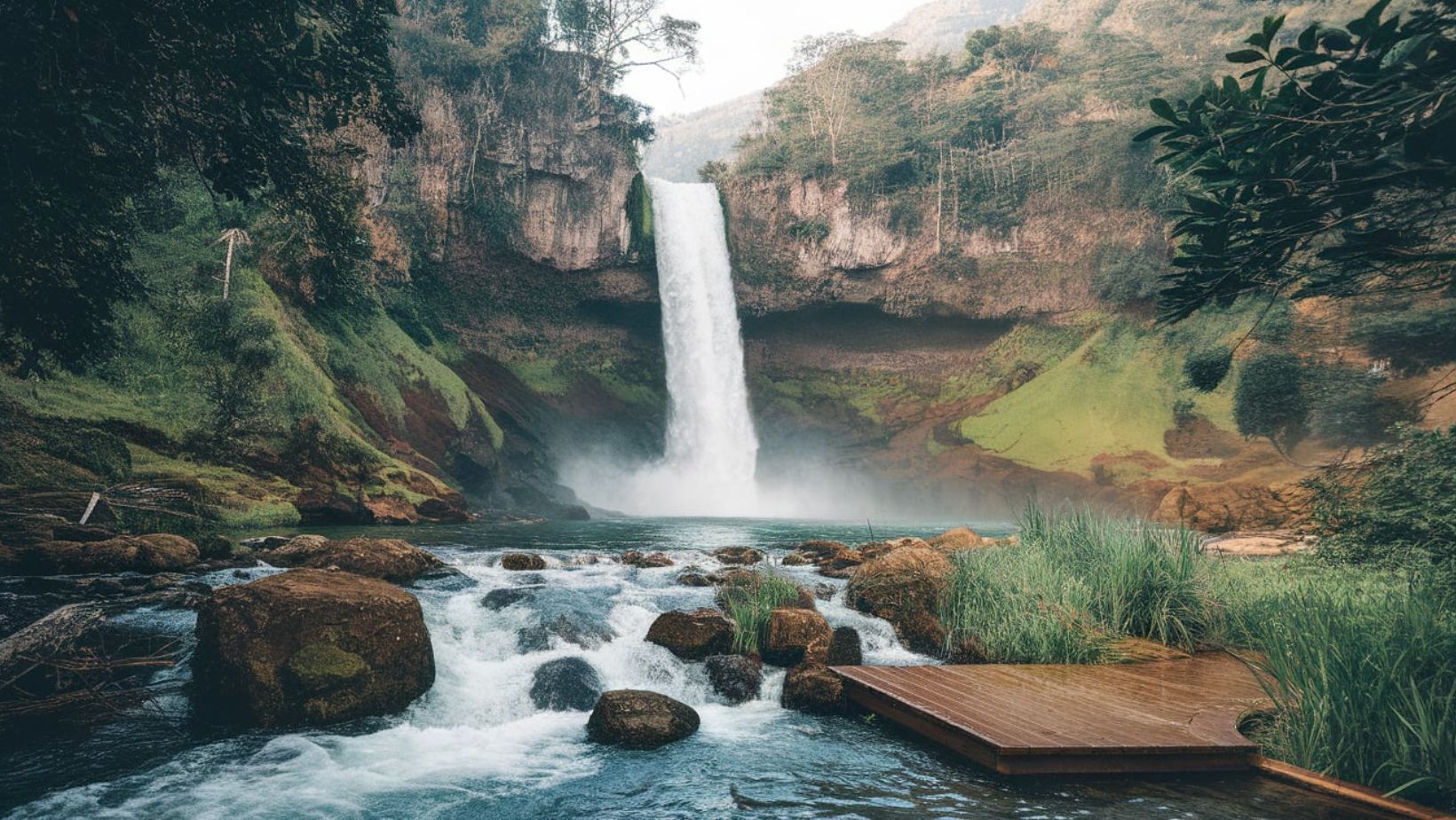How does a 60-foot waterfall transform into nature’s largest mirror each winter? What makes this cascade one of America’s most accessible natural wonders? Why do photographers and ice climbers alike flock to this spot when temperatures drop below freezing? In the heart of Pisgah National Forest, where accessibility meets natural splendor, Looking Glass Falls proves that nature’s most spectacular shows can be available to everyone.
Looking Glass Falls Stands as Americas Most Accessible Natural Wonder
Cascading 60 feet in a single, graceful drop, Looking Glass Falls represents a rare combination of natural beauty and universal accessibility. Unlike other significant waterfalls that require strenuous hikes, this natural wonder offers paved pathways and viewing platforms suitable for visitors of all mobility levels. The falls’ design makes it one of the few waterfalls in the Eastern United States where wheelchair users can get close enough to feel the spray.
Winter Transformation Creates Magical Ice Mirror
During winter months, Looking Glass Falls undergoes a spectacular metamorphosis. Like other magical natural pools, the falls create unique phenomena – in this case, a massive sheet of ice that forms behind the falling water, creating a mirror-like surface that gives the falls their name. This natural mirror can grow to impressive dimensions, sometimes covering the entire 60-foot rock face.
Summer Swimming Offers Natural Adventure
The falls’ lower pools provide a refreshing swimming experience during warmer months, similar to how tropical paradises attract swimmers. The pools’ varying depths accommodate different swimming abilities, while the constant flow of fresh mountain water maintains perfect temperatures during hot summer days. Safety features and clear signage help visitors enjoy the water responsibly.
Universal Design Sets New Standards
The infrastructure around Looking Glass Falls demonstrates how thoughtful design can make nature accessible to everyone. Paved pathways, sturdy railings, and multiple viewing platforms at different levels allow visitors with varying mobility needs to experience the falls’ beauty. The parking area, restroom facilities, and informational displays all meet or exceed ADA requirements.
Geological Features Create Perfect Conditions
The falls’ unique geological composition creates ideal conditions for both its mirror effect and year-round stability. The granitic gneiss rock face, polished smooth by centuries of water flow, provides the perfect surface for winter ice formation. The rock’s durability also ensures the falls’ long-term stability, making it safe for developed access points.
Photography Opportunities Abound Year Round
Each season offers distinct photographic opportunities at Looking Glass Falls. Winter brings the famous ice mirror effect, spring showcases abundant water flow and wildflowers, summer captures swimming and recreation, and fall presents spectacular foliage backgrounds. The accessible viewing platforms provide stable locations for photography equipment.
Educational Programs Reach Diverse Audiences
The falls serve as an outdoor classroom for visitors of all abilities. Interpretive programs adapt to different learning styles and physical capabilities, ensuring everyone can learn about the area’s geology, ecology, and history. Special programs for school groups incorporate universal design principles to include students of all abilities.
Conservation Efforts Balance Access and Protection
Managing Looking Glass Falls requires careful balance between accessibility and environmental protection. Erosion control measures protect both the natural features and constructed facilities. Water quality monitoring ensures safe swimming conditions, while trail maintenance preserves safe access for all visitors.
Local Community Benefits from Inclusive Tourism
The falls’ accessibility has made it a cornerstone of local tourism. Businesses in nearby Brevard have adapted to serve visitors of all abilities, creating an inclusive tourism destination. The falls’ year-round accessibility provides steady economic benefits to the region, even during off-peak seasons.
Future Improvements Focus on Enhanced Access
Plans for Looking Glass Falls continue to focus on improving accessibility while protecting natural features. Proposed enhancements include tactile exhibits for visually impaired visitors, enhanced audio descriptions of the falls’ features, and improved technological interfaces for sharing information about water conditions and seasonal changes.
Climate Change Adaptation Ensures Long Term Access
Management strategies account for climate change impacts on the falls. Monitoring systems track water flow patterns, ice formation conditions, and structural stability of access features. This data helps managers adapt maintenance and access protocols to ensure continued safe visitation as environmental conditions change.
